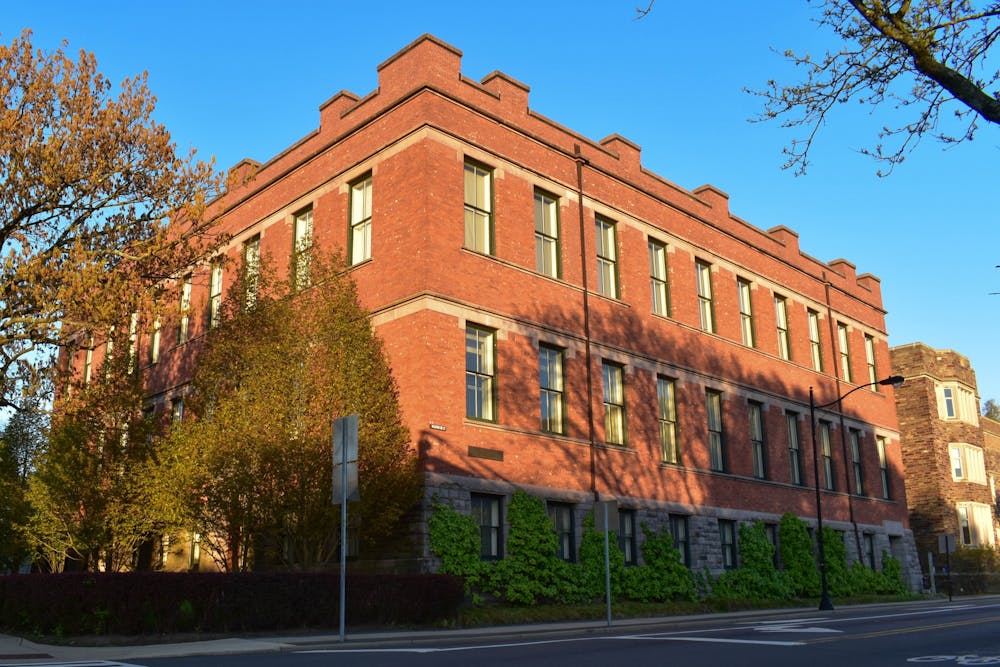This Tuesday, Sept. 13, The Daily Princetonian published an article titled “200+ future humanities majors enroll in CHM 201 this semester” in its Humor section. In many ways, the satirical piece fulfills its purpose: it highlights the intensity and tediousness of General Chemistry I at Princeton. It also touches on concerns powerfully articulated by Lucia Wetherill in her spring 2022 column “The case for lifting up instead of weeding out in Princeton’s pre-med classes.”
The mechanism through which this Humor piece achieves its aim, however, warrants as much attention as the discussion it aims to inspire about CHM 201 and STEM at Princeton more generally.
To be clear, this column is not a critique of the Humor article. This column is, rather, a commentary about why the Humor piece has satirical punch and about the broader relationship between STEM and the humanities at Princeton and beyond.
So how does the Humor article achieve its aims? In order to highlight the shortcomings in Princeton’s STEM curriculum, the piece mobilizes tropes concerning the humanities and social sciences. Namely, the piece implies that half of the would-be STEM majors enrolled in CHM 201 will become humanities majors because CHM 201 is simply too challenging (or unengaging). In doing so, the Humor piece portrays the humanities and social sciences as the easy way out — the path that those not cut out for STEM choose once they realize that STEM is indigestible.
This framing of the humanities and social sciences in a Humor piece makes sense: it underscores the weedout culture so widespread in university-level STEM courses. But this framing also relies on a widely-held assumption that STEM is inherently more difficult than, and thus more intellectually valuable than, the humanities and social sciences.
Unfortunately, this assumption is widely shared by Princeton students pursuing both STEM and humanities fields. Even at one of the world’s foremost research institutions, where the pursuit of knowledge is incredibly valued, there exists somewhat of an unspoken hierarchy between STEM and the humanities.
To demonstrate how this hierarchy functions, I will offer a personal anecdote. Last semester, when I descended into the basement of my residential hall to print a handful of sources for my Anthropology of Law course, I happened across a fellow student. As I was printing my sources, we began to chat, and he soon asked me, “what’s your major?”
“Anthropology,” I responded excitedly (for I genuinely love my chosen field of study). This engendered a perplexed expression on the face of my interlocutor. He paused for a moment and then looked at me and said: “you should really consider changing to COS if you’re smart enough. That’s where all the jobs are.” He proceeded to explain that Anthropology is a useless discipline.

This interaction neither surprised nor offended me. Sure, I was not expecting this stranger to explain — without my prompting — why I should switch majors. His reaction to hearing my major was certainly not the norm. And yet, his commentary encapsulated the sentiment that characterizes the STEM/humanities divide at Princeton: that those seeking true rigor and opportunities at Princeton must study STEM.
I am confident that the majority of Princeton students have encountered this hierarchy in one way or another. Despite its prevalence, however, this hierarchy is under-discussed. Hence, the primary aim of this column is to openly acknowledge that this hierarchy exists and to urge readers to question why it exists.
So, readers, I urge you to ask yourselves a few questions. Is STEM categorically more difficult than the social sciences and humanities? If so, how and why?
What if the grading norms in each respective discipline changed so that it became harder to get an A in ANT 201 than in MAT 201? Would this change your perception of the difficulty of the disciplines?

In my opinion, it is precisely the weedout culture so widespread in STEM coupled with the intense workload of STEM courses that make many of us perceive STEM as sitting at the top of the academic hierarchy. Because, in all honesty, what social sciences and humanities courses are asking of students is incredibly challenging. In many STEM courses, on problem sets, in labs, and on exams, you are expected to solve problems that others have solved before you. In the majority of social sciences and humanities courses, however, you are asked to make an argument that no one has made before, often in the form of an essay.
STEM is an intellectual treasure trove and incredibly important. I am not seeking to belittle STEM in any way, shape, or form. In fact, part of my motivation for writing this piece lies in the fact that I believe that the aforementioned academic hierarchy negatively impacts STEM by reinforcing the idea that STEM courses have to be difficult, thus generating some form of performative difficulty. For the sake of students across all departments, I look forward to a future of more horizontal relationships between the disciplines.
Genrietta Churbanova is a junior from Little Rock, Ark. in the Anthropology Department. She is the Head Opinion Editor at the ‘Prince,’ and can be reached at geaac@princeton.edu.








